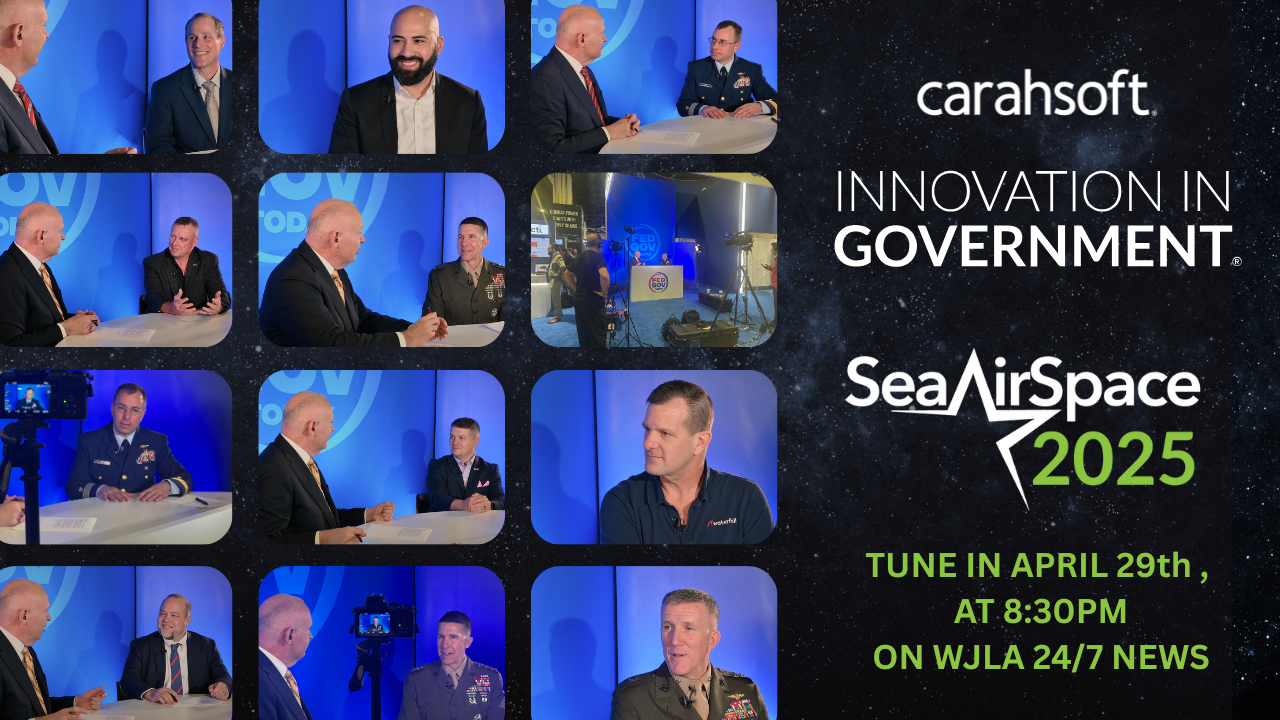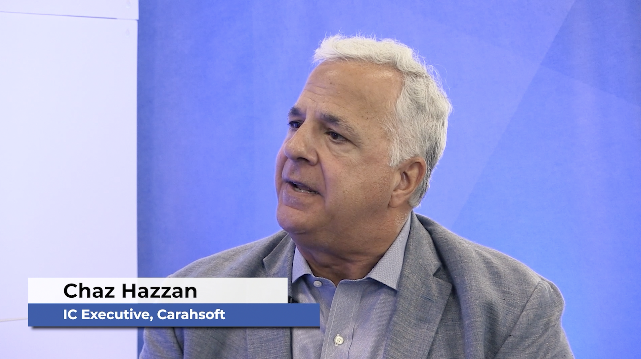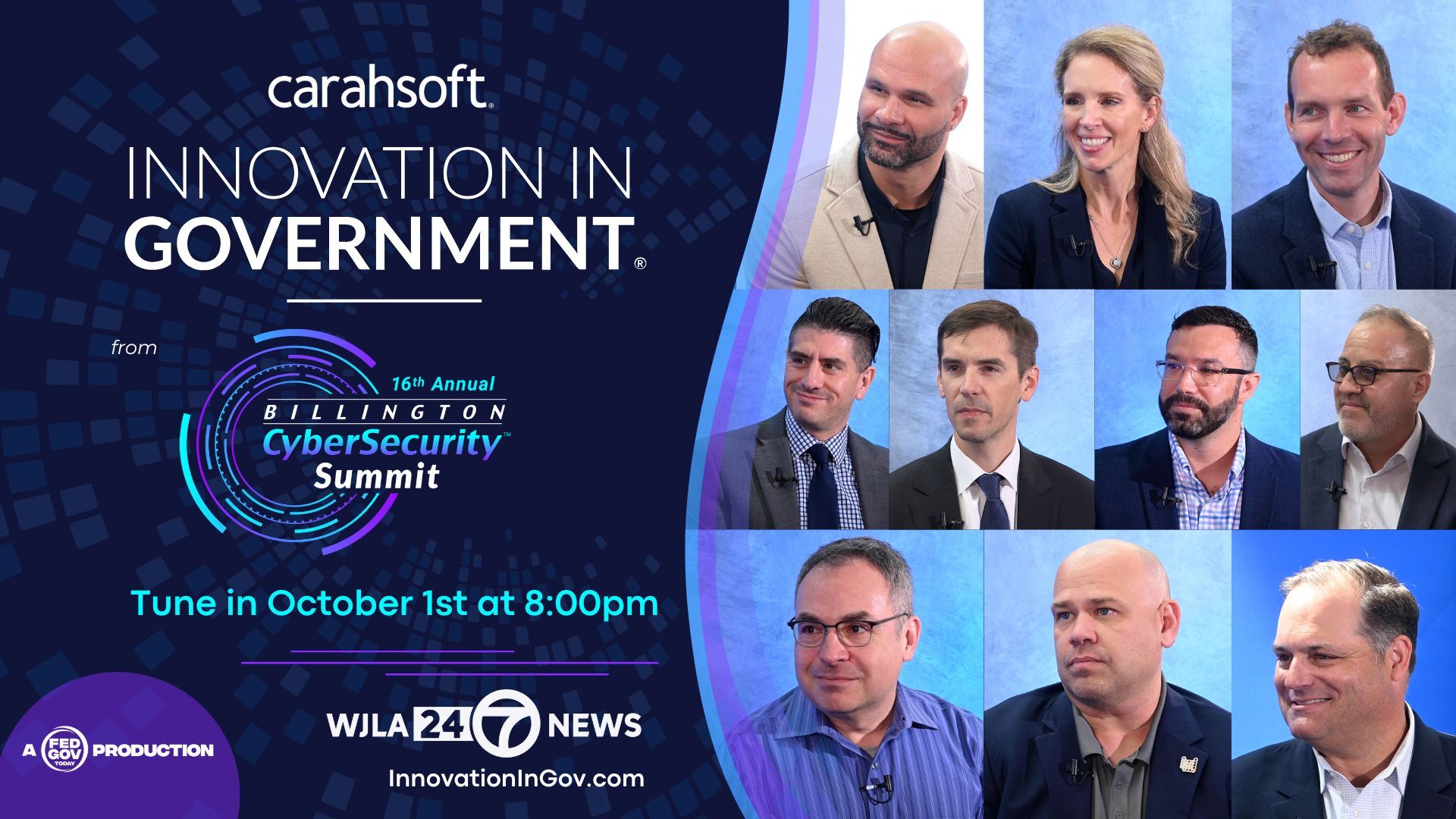Original Broadcast 11/19/25
Presented by Carahsoft
Technological innovation in the defense sector often follows a familiar pattern: large programs, long acquisition cycles, and enterprise-scale systems designed to serve broad mission sets. But in the Indo-Pacific—where the battlespace is vast, distributed, and dynamic—innovation demands something different. It requires agility. It requires rapid iteration. And above all, it requires solutions built at the edge, close to the operators who use them.
Few understand this better than Lt. Col. Paul “Gu$” Garcia, HIANG (Ret.), an engineer, operator, and founder within the innovation ecosystem known as Merge Combinator. Garcia’s perspective is shaped by years of experience as a pilot and operator in the Hawaii Air National Guard, where he witnessed firsthand the operational realities of a theater that stretches across half the planet. His mission now: bring commercial innovation models, fast-cycle engineering practices, and operator-centered design into defense modernization.
At TechNet Indo-Pacific, Garcia articulated a central truth: the systems meant to support operators often become barriers instead. Layers of bureaucracy, compliance complexity, and enterprise-scale architectural requirements can slow progress to the point that solutions arrive too late—or arrive mismatched to real mission needs.
Garcia describes it succinctly: “Sometimes the systems create the wrong outcomes.” In other words, when acquisition is too slow, too rigid, or too far removed from operators, the military risks fielding tools that solve yesterday’s problems, not today’s.
 To counter this, Garcia champions an innovation model that blends speed with relevance. He founded Signal Blocks, an initiative that applies commercial-style startup practices to defense challenges. Instead of lengthy requirements documents and multiyear development cycles, Garcia emphasizes rapid prototyping, field evaluation, and feedback loops driven directly by operators. The question is not “Can we build it?” but “Does it actually help the mission—and can we prove it?”
To counter this, Garcia champions an innovation model that blends speed with relevance. He founded Signal Blocks, an initiative that applies commercial-style startup practices to defense challenges. Instead of lengthy requirements documents and multiyear development cycles, Garcia emphasizes rapid prototyping, field evaluation, and feedback loops driven directly by operators. The question is not “Can we build it?” but “Does it actually help the mission—and can we prove it?”
This approach is especially critical in the Indo-Pacific. The region’s vast distances, diverse terrain, and joint operational environment create challenges that cannot be solved by a single enterprise solution. Edge environments—from airfields to maritime platforms to distributed outposts—require systems that are lightweight, adaptable, and resilient. They must integrate with joint and coalition partners. They must function in degraded communications environments. And they must evolve quickly as missions change.
Hawaii plays a unique role in this innovation ecosystem. Garcia calls it an ideal proving ground: close enough to the fight to matter, rich with domain expertise across the services, and a hub for training exercises that simulate real-world conditions. Innovations built and tested in Oahu can be validated rapidly, avoiding the pitfalls of laboratory-only solutions that fail once exposed to the realities of operations.
In Garcia’s words, “As the technology moves so fast, it’s very difficult to keep up at the enterprise level.” Enterprise modernization is essential, but it often struggles to match the speed of change in commercial technology. Meanwhile, operators—especially in contested theaters—cannot afford to wait. They need capabilities today, not years from now.
This is where Garcia sees the intersection of edge innovation and enterprise modernization. The goal is not to replace enterprise systems, but to complement them. Edge tools can be built and iterated quickly, informed by real-world feedback. Once validated and proven in operational environments, those tools can scale upward—informing enterprise requirements, accelerating broader adoption, and ensuring that large programs are shaped by real operator needs rather than hypothetical ones.
This bottom-up innovation model brings several advantages. It reduces risk by testing early and often. It increases relevance by grounding solutions in mission realities. And it enhances operator trust by involving them directly in development. In the Indo-Pacific—where conditions can change rapidly, and where forces must adapt to new threats and geographic constraints—this agility becomes a strategic advantage.
Garcia also emphasizes the importance of collaboration. Merge Combinator brings together operators, engineers, technologists, and innovators from across sectors. This cross-functional integration mirrors the joint nature of the Indo-Pacific itself. Airmen, Marines, surface operators, cyber teams, and coalition partners all face similar challenges, and all benefit from sharing ideas, prototypes, and lessons learned.
He envisions an innovation environment where small, focused teams can validate solutions quickly, then feed those solutions into larger programs of record. In doing so, the Department of Defense increases its ability to modernize continuously rather than episodically. It reduces the lag between technological advancement and fielded capability. And it strengthens the connection between system developers and system users.
At a deeper level, Garcia’s message is about culture. Innovation cannot thrive if operators fear failure, if bureaucratic processes stifle creativity, or if requirements remain disconnected from reality. To compete with adversaries who iterate rapidly—often without the constraints of democratic oversight—the U.S. must empower its own operators and innovators to move faster, test earlier, and adapt continuously.
The Indo-Pacific is not merely another theater. It is the defining theater of this generation—where great-power competition, technological acceleration, and operational complexity converge. In such an environment, innovation at the tactical edge is not optional. It is essential.
For Garcia, the path forward is clear: build fast, test forward, measure impact, and scale what works. When operators collaborate directly with engineers, when solutions are shaped by real missions, and when innovation cycles happen at the speed of relevance, the U.S. gains an undeniable advantage.
Key Takeaways
-
Edge-focused innovation accelerates field-ready capability and reduces the risk of misaligned systems.
-
Hawaii’s proximity to real-world operations makes it a critical testbed for Indo-Pacific modernization.
-
A bottom-up, operator-driven model ensures technology evolves at mission speed rather than enterprise speed.



